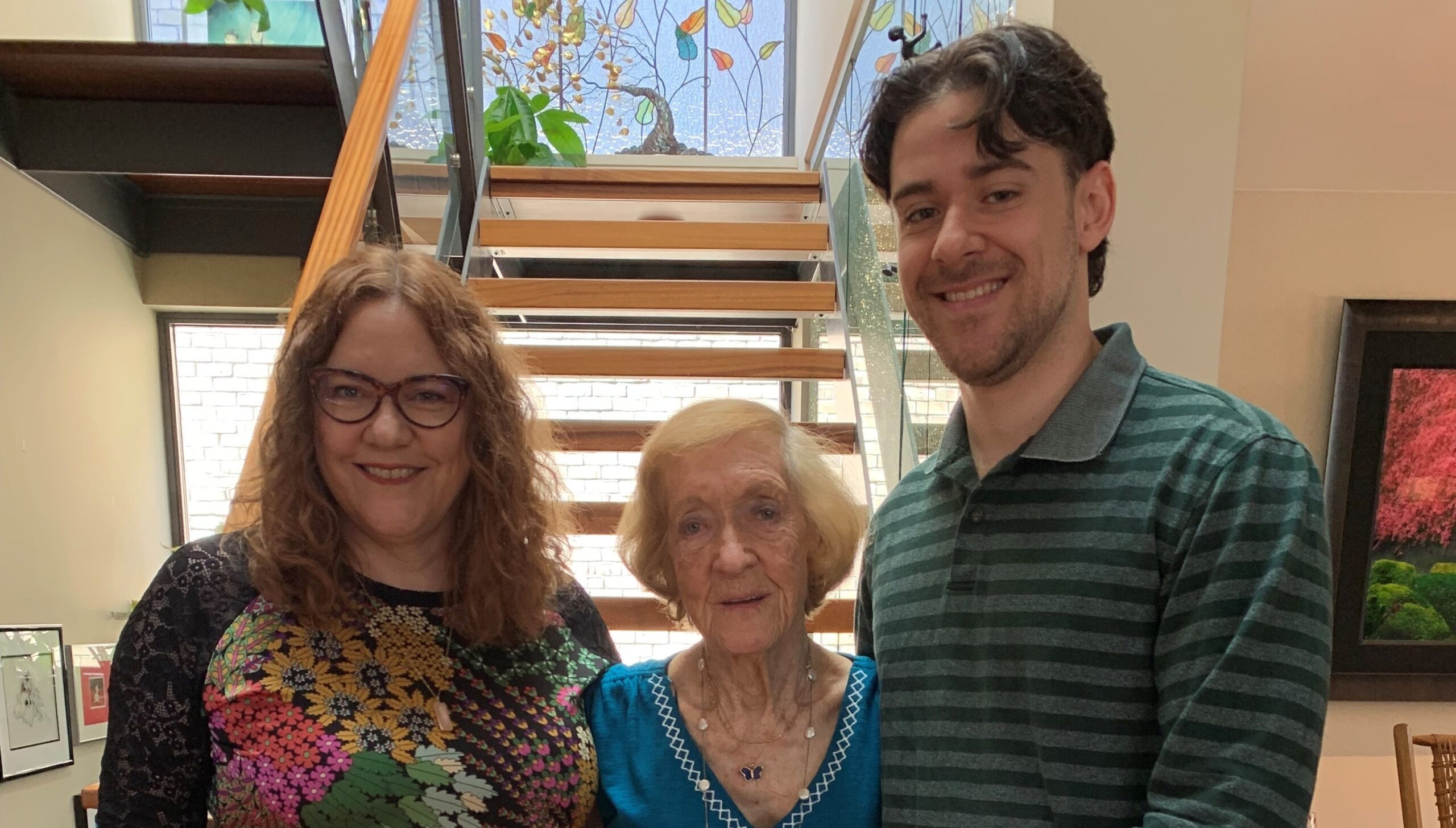Three generations of ICU nurses


You could say that intensive care nursing is in ONA6 Local Coordinator and Bargaining Unit President Jane Penciner’s blood.
Not only is she a medical-surgical intensive care unit (ICU) nurse at a Toronto hospital, her mother was a cardiovascular ICU nurse and her son, also an ONA member, recently became one as well.
“I think ICU nursing speaks to all our personalities,” she says. “We’re all decision-makers and critical thinkers and we don’t like to be bored. We like to learn new things. And so that’s why we migrated to these kinds of areas.”
She notes that growing up hearing many nursing stories from her mother influenced her decision as well.
“My mother was someone that I looked up to and respected, and that contributed to my decision to be a nurse. She was also very capable and cared about people; I also care about people. So, it helped me lean in that direction.”
Her mother, Barbara Newman, has quite the story of her own. Born and raised in England, where she worked as a midwife, she immigrated to Canada in her twenties, after a brief stint in New York, because of “opportunities for nurses in North America,” Penciner says.
She initially stayed with a family in Canada and had a network of nursing friends before finding her own apartment, meeting Penciner’s father and setting down permanent roots.
“My mother worked on the first open heart surgery and heart valve transplant in Canada on the cardiovascular ICU at Toronto General Hospital [TGH],” Penciner explains, noting it was between the years of 1959 and 1963. “She cared for both pre- and post-op heart surgery patients.”
Specifically, her mother worked with renowned surgeons Dr. Wilfred Gordon Bigalow, who developed the artificial pacemaker and use of hypothermia in open heart surgery to reduce the amount of oxygen needed and make the procedure safer, and Dr. Raymond Heimbecker, who performed the world’s first complete heart valve transplant in 1962 and Canada’s first modern heart transplant in 1981 with anti-rejection drugs to prolong life.
She remained an ICU nurse up until she had four children, when she took some time off before returning to work at a nearby doctor’s office. That allowed her to drop off and pick up her children from school and come back for lunches. She retired approximately 20 years ago in her early seventies.
While Penciner moonlit in facilities further afield at the start of her career, like her mother, she also prioritized a work-life balance once she had her three children. Since then, she has worked in a medical-surgical ICU of a medium-sized Toronto hospital that is close to home.
ICU nursing speaks to all our personalities.
That included serving as ICU charge nurse before becoming an ONA Local Coordinator and Bargaining Unit President several years ago. Even then, she continued to pick up weekend shifts in the ICU until the pandemic hit.
“We have such a variety of patients because we’re the only ICU in the hospital,” she says. “We get patients from mental health, labour and delivery – all sorts of people with every single kind of surgical and medical issue. Anyone who's critically ill comes to us. It doesn’t matter where they’re from other than pediatrics, as we don’t take those patients.”
In a full-circle moment, Penciner’s son Jacob graduated from McMaster University in Hamilton two years ago and “works in the same building at TGH my mother did when she came to Canada. I definitely think that she influenced him.”
And like his grandmother, he is also a nurse in the cardiovascular unit. Working part-time there allows him to also work for the federal government, providing nursing care to Mishkeegogamang Ojibway Nation, approximately 530 kilometres north of Thunder Bay near Pickle Lake.
His schedule consists of two to three weeks with this Indigenous community, where he works every day and is on-call, two to three weeks back in Toronto, where he picks up ICU shifts at TGH, and then two to three weeks off, Penciner notes.
“He’s been thinking about going back to school in the future and becoming a nurse practitioner and wanted a more well-rounded experience. He knew the most about heart and lungs when he went up north, but he had to learn about delivering babies, pediatrics, etc. because he wasn’t doing that. So, he’s been learning, learning, learning and feeling more comfortable managing different patients with different issues.”
With three generations of nurses in the same family and a husband who also works in the health-care sector as a doctor, Penciner says family dinners with them all are very interesting.
She notes, “My mother tells us about her days as a midwife in England when she would go to a cottage in the country where a woman was in labour and the husband was nowhere around the delivery because that’s just how it worked.
“We talk about scope of practice, standards of care and policies because so much has changed over the years and there was much more autonomy of practice when my mother was a nurse. Things are just harder these days. We all agree on that. But we also laugh a lot too because some of my mother’s stories are very funny and we cherish them.”
This is a standard popup that can be repurposed for general site-wide messages.
We use cookies to improve your experience on our website. To learn more, read our privacy policy.